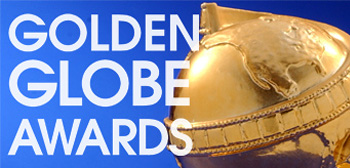Not a Fan of Hawaiian Pizza, Processed Cheese, and California Rolls? Blame Canada
Consider Hawaiian pizza: The divisive pineapple-and-ham topped pie is viewed as an abomination by many pizza lovers, including the president of Iceland, who once threatened to ban it. Consider, too, boxed mac and cheese. In a world of wonderful noodle dishes, from silky cacio e pepe to ramen served in a rich broth, Americans dump milk and neon-orange cheese powder on a bowl of macaroni and call it dinner. Even sushi, far from its native Japan, can find itself transformed into pan-fried “sushi pizza,” adorned with all manner of sweet and fatty sauces.
Americans have a penchant for unhealthy, processed foods and a tendency to turn other cultures’ cuisines into dishes occasionally decried as crimes against cuisine. But none of the above examples were invented in the United States. Hawaiian pizza hails not from Honolulu, but from Chatham, Ontario. Chef Kaoru Ohsada created the first sushi pizza in Toronto. Even instant macaroni and cheese has roots in Canada, and Canadians eat three times as much of the cheesy noodles compared to their cousins to the south.
“We have kind of adopted it as our own,” says Canadian food writer Gabby Peyton of The Food Girl in Town. “It’s more ubiquitous in Canada, for sure.”
These are just some of the culinary creations for which Canada deserves—depending on your perspective—to be either lauded or maligned. Instead, eaters largely assume they are American. Why is that?

Food historian Ian Mosby of Ryerson University points to the fact that “the U.S. is a cultural monolith, even in Canada.” The two countries share a language, and 90 percent of Canadians live within 100 miles of the U.S. border, contributing to shared cultural influences across both countries. “We eat the same kinds of fast foods as our American neighbors,” says Mosby. “It’s very hard to disentangle what constitutes Canadian culture and American culture at this point.”
To wit, aside from poutine and maple syrup, many diners have a hard time attributing foods and dishes to Canada. Given the association of processed, unhealthy food with the aptly named “SAD,” or Standard American Diet, it’s perhaps not surprising that Canadian innovations such as processed mashed potatoes (developed in Ottawa in 1960) or processed cheese (arguably invented in 1892 in Ingersoll) are often assumed to be American. This is further compounded by Canada’s depiction as a utopia—despite Canadians’ own occasional assertions that these overly optimistic views of Canada are “mooseshit.”
“We kind of have a world perspective, not just about our food, but about how clean and nature-filled Canada is,” says Peyton. There’s no place in that utopia for the highest per-capita doughnut consumption on earth, even though Canada beats out America for that honor.
But Canada has a complex historical and culinary landscape, defined not just by its proximity to the U.S., but by its diversity. Following decades of global immigration, in 1971, Canada became the world’s first country to enact an official policy of multiculturalism. Today, immigrants represent more than 20 percent of Canada’s population, which is more than any other G8 country.

So while America tells its immigrant story more loudly, Canadian immigrants are quietly responsible for many new dishes associated with the United States. In British Columbia, Chinese food buffets got their start when Chinese railway workers prepared mass quantities of their favorite dishes to share with Scandinavian loggers, in line with their concept of smorgasbord. While it’s challenging to say whether the Canadian version inspired Chinese buffets in the United States and elsewhere, Canadian-Chinese food (think Newfoundland chow mein, peanut butter dumplings, and more) is as rich a category as American-Chinese food, and Montreal’s Bill Wong certainly became one of the pioneers of all-you-can-eat Chinese food offerings as we know it.
The popularity of Chinese food in Canada also inspired Sam Panopoulos, a Greek immigrant in Ontario, to invent Hawaiian pizza. In a nod to the Tiki culture sweeping North America, and taking inspiration from the sweet-and-savory flavors of Chinese cuisine, Panopoulos tossed canned pineapple on pizza, and the world’s most divisive pie was born. (This is equally true in its birthplace—about a quarter of Canadians dub it “blasphemy,” according to a 2018 survey by Abacus Data.)
Hawaiian pizza is not the only dish with an American name but roots in Canada. To hear Osaka native Chef Tojo tell it, he created the California Roll in Vancouver in the ‘70s to introduce sushi to diners averse to raw fish and seaweed. Tojo’s dish did away with the former in favor of crab and hid the latter by turning the roll inside out, winning over North Americans. And despite arguments to the contrary, its name, according to Janis Thiessen of the University of Winnipeg, is likely due not to its purported place of invention, but rather to the association between avocados and California (much as Hawaii’s pineapples lent their name to Panopoulos’s pizza).
“These differences may be the result of the British tradition in Canada of using vinegar on French fries,” she writes, “a practice not common in the United States.”
“Personally I don’t like them,” says Peyton, “but I feel like a bad Canadian for saying that!”





